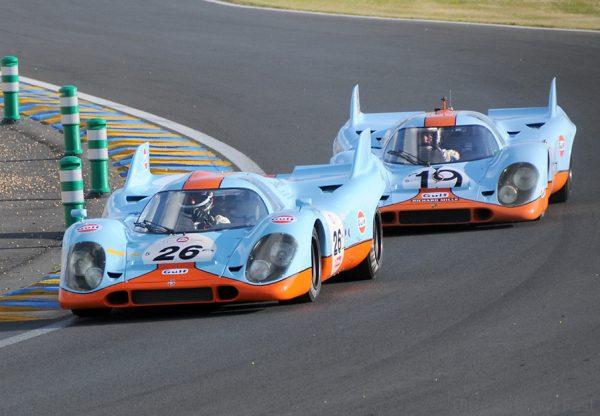Today, this 1973 sports car has been sold for as high as RM4.1 Million
The RS badge on this classic supercar from Porsche stood for the German Rennsport (‘racing sport’). This car was designed to be as light as possible and early models even had thinner steel used in its production, 0.8mm gauge instead of the standard 0.88mm steel.
This Carrera 2.7 was homologated for the FIA Group 4 Grand Touring category, which called for the production of 500 cars. Based on the contemporary 911S, the RS 2.7 is the classic ‘big engine in a small car’ approach to building a racecar for the road.
The RSR prototypes with 2.8-litre engines from 1973 produced 290 hp, the three-litre from the following year put out 330 hp. The production aggregate of the Carrera RS series received only minor modifications. The bore was 92 millimetres; the stroke of 70.4 millimetres remained unchanged compared to the road-legal vehicle. At 10.3:1, the compression was rather moderate by today’s standards. The six-cylinder normally-aspirated engine in the rear generated 294 Nm of torque. In the racing version, the oil cooler was installed at the front of the vehicle.

Everything used to be lighter
In developing the 911 Carrera RSR 2.8 for the 1973 season, the Porsche engineers scored a real coup. Despite the integration of many safety features, including a steel roll cage and the installation of a large 120-litre fuel tank, the racing prototype still only tipped the scales at around 900 kilograms.
This meant that the racer was a lightweight like the production model Carrera RS. The engineers achieved this goal because they were already using cutting-edge materials in the 1970s. Doors, front lids and side windows were made of plastic. The first RSR was not only light, but it was also slim and short.
The latest generation is around 50 centimetres wider, 40 centimetres longer and with a 30-centimetre-longer wheelbase. Asterix became Obelix – but without forfeiting its nimbleness and punch. On the contrary: the extensive setting options on the kinematics of the Porsche 911 RSR-19 ensure the best possible adjustments for all racetrack characteristics and conditions. Moreover, the optimised weight distribution with the engine mounted in front of the rear axle yields noticeable advantages.

“There’s always a lot of movement in the Porsche 911 Carrera RSR 2.8 from 1973. We no longer get those enormous rolling motions in the new cars, nor do we get hefty understeer. But such things are great fun,” says Richard Lietz. The experienced works driver from Austria adds: “When braking and turning in, you have to wait for the perfect moment during the load change to put your foot down again. If you don’t get it right, it gets tricky; a huge challenge for us drivers. The first RSR is my all-time favourite.
It’s wonderful to drive this car at the limit. Such a car asks to be driven fast. With all RSR models, this is an approach appropriate to the species, so to speak.”

PORSCHE 911 CARRERA RS 2.7 Specification
Engine: Flat-six, rear-mounted
Capacity: 2687cc
Power: 154kW
Torque: 255Nm
Transmission: 5-speed manual
0-100km/h: 6.3sec
Curb Weight: 2250 lbs
Selling Price New: RM80,307 before local taxes and delivery.
Selling Price Today: RM4.1 million to RM1.5 million depending on condition.